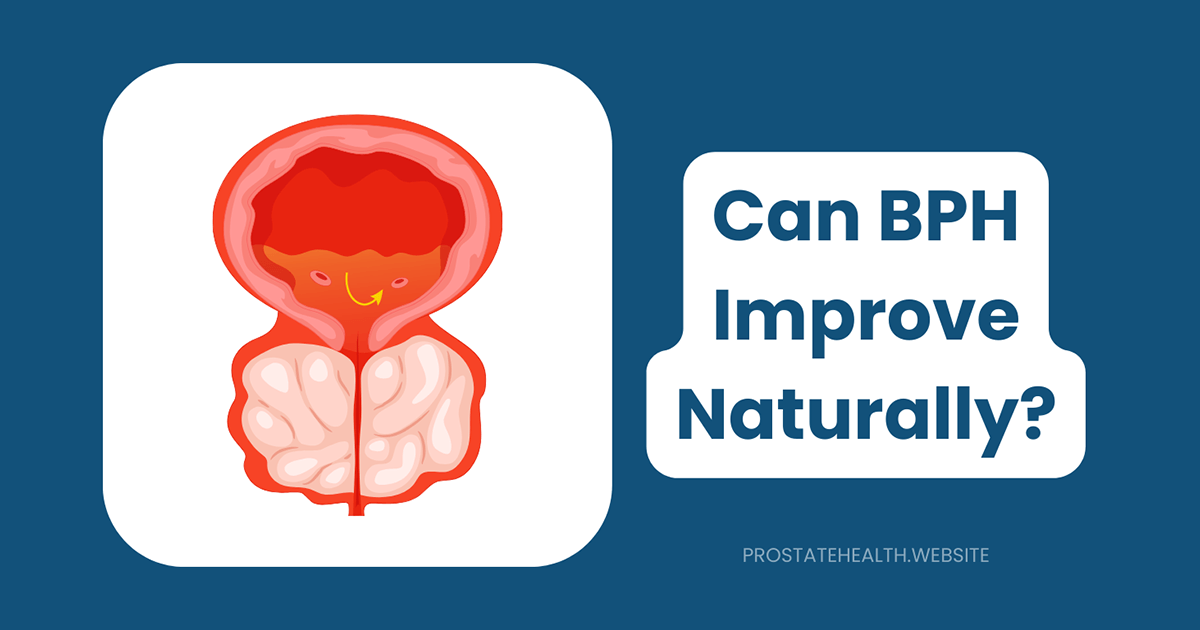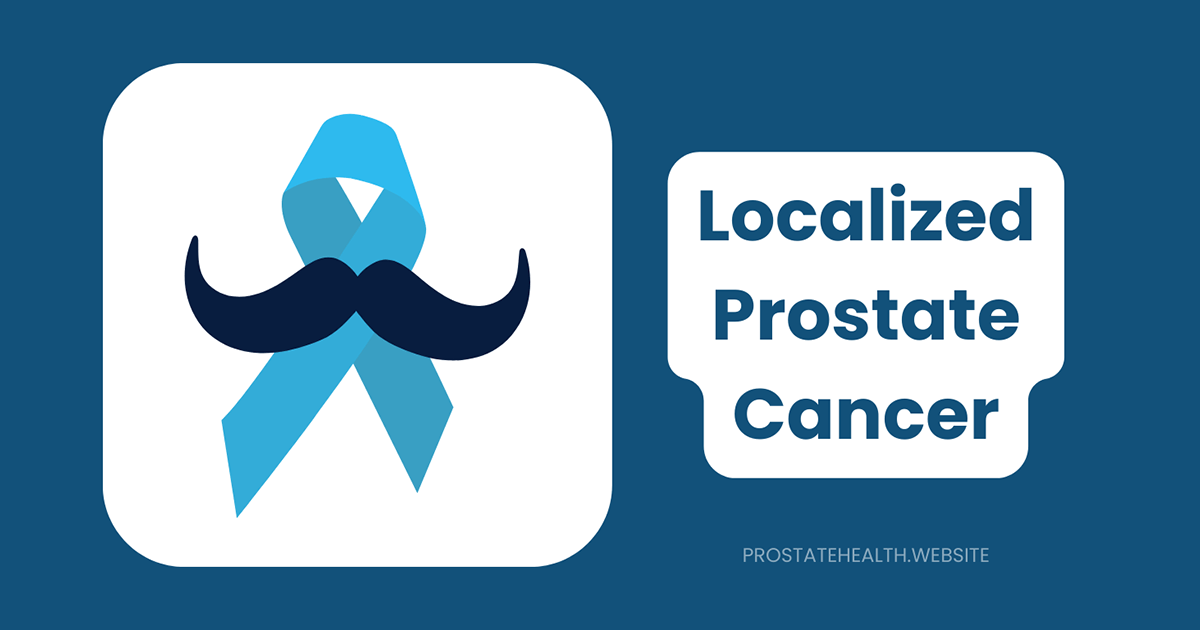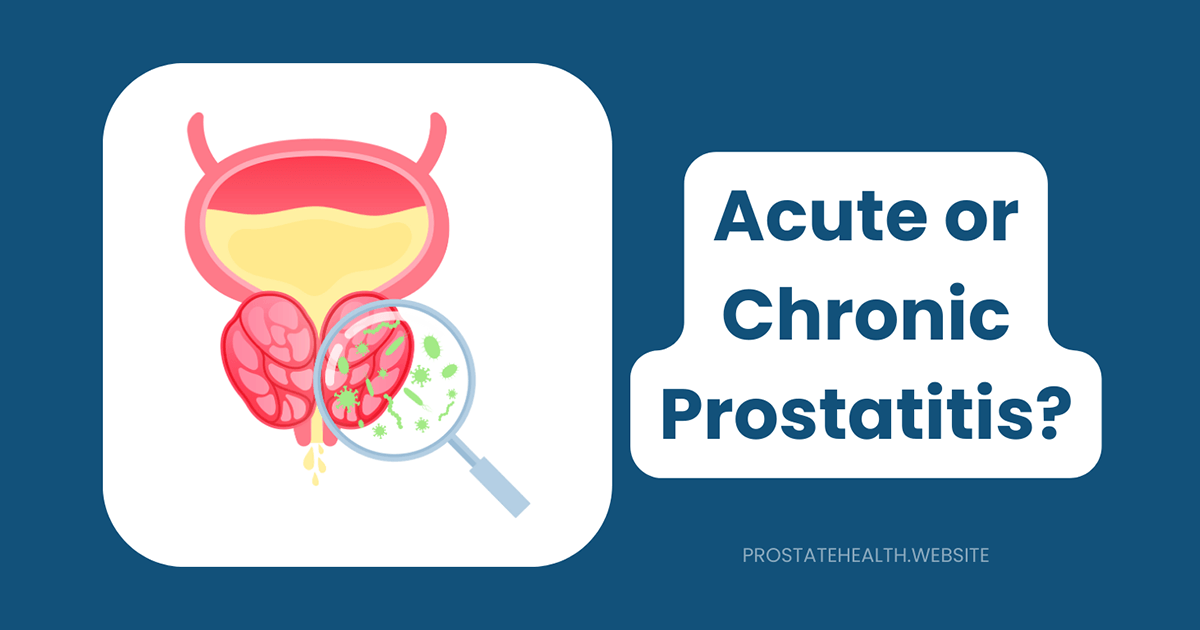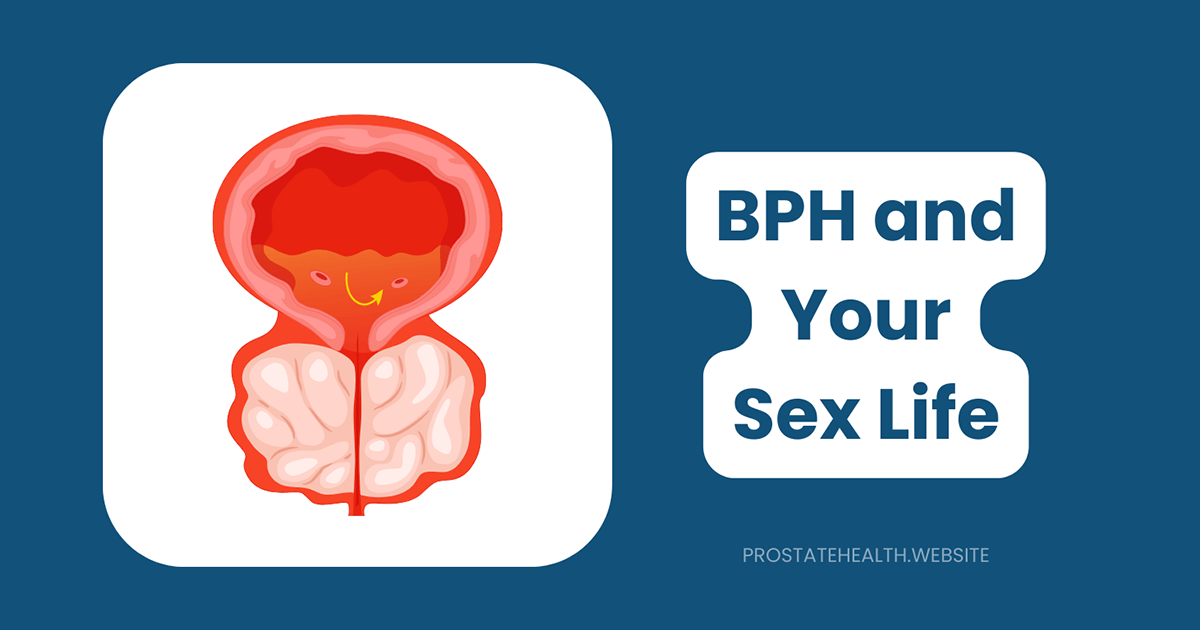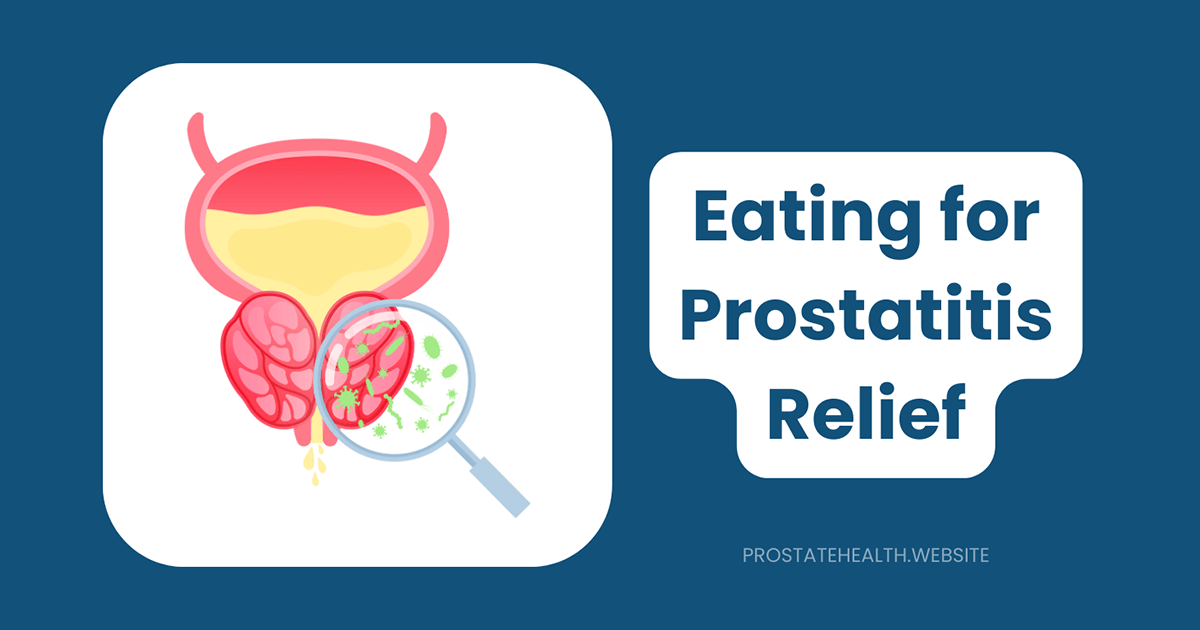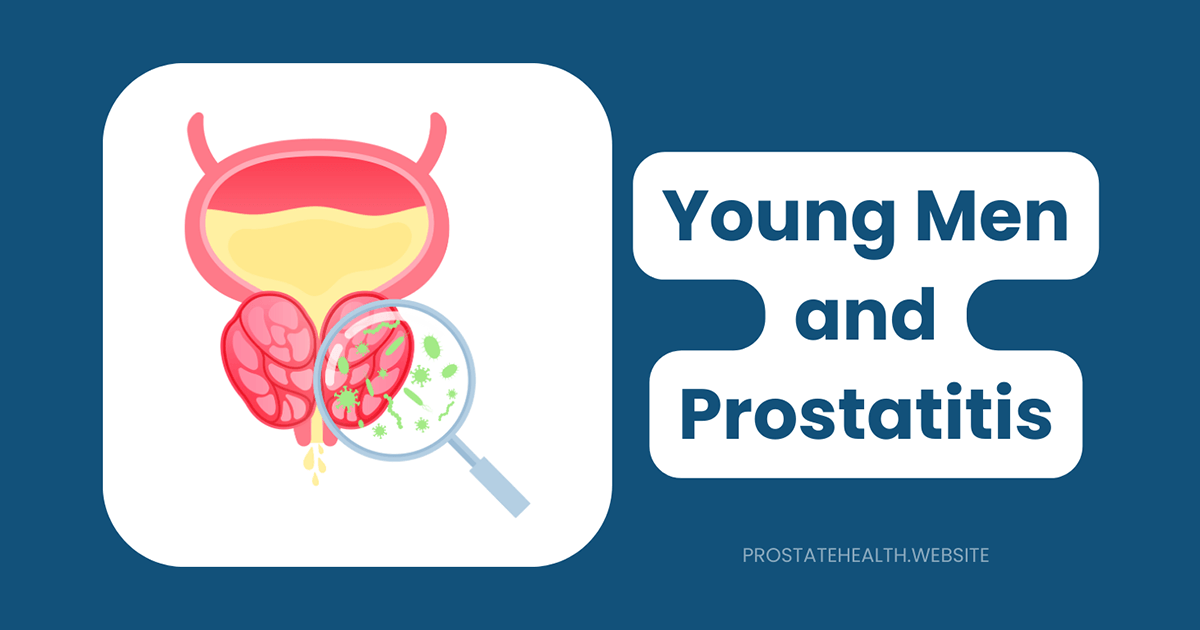Prostatitis and Sexual Dysfunction: Breaking the Cycle
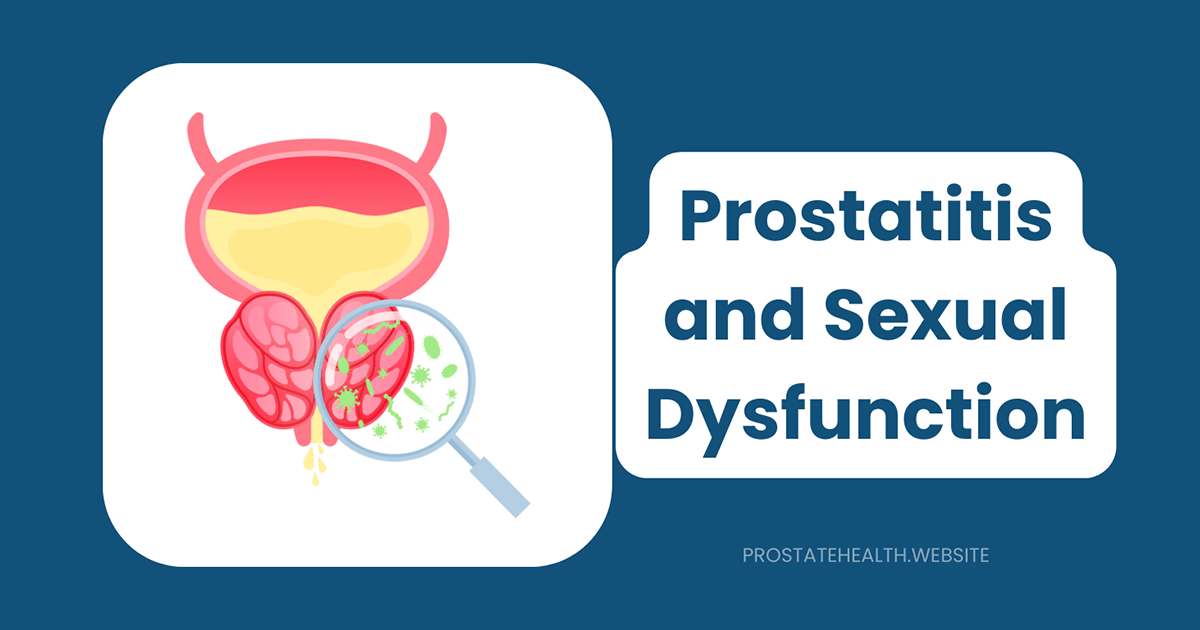
For men dealing with prostatitis, the physical symptoms—pain, urinary issues, and discomfort—are often just the beginning of their struggles. What many don’t anticipate, and what doctors don’t always address, is the profound impact this condition can have on sexual function and intimate relationships.
As someone who has worked with countless men navigating prostate health challenges, I’ve seen firsthand how prostatitis and sexual dysfunction can create a frustrating cycle that feels impossible to break. Pain leads to performance issues, which trigger anxiety, which worsens both the prostatitis symptoms and sexual function—and the cycle continues.
Today, I’m addressing this often-overlooked aspect of prostatitis and sharing evidence-based strategies to break this cycle and reclaim both prostate health and sexual wellbeing.
Understanding the Connection: How Prostatitis Affects Sexual Function
Before we can break the cycle, we need to understand how these conditions are connected. Prostatitis—inflammation of the prostate gland—can impact sexual function through several mechanisms:
Physical Mechanisms
1. Inflammation and Pain
The prostate plays a crucial role in sexual function, producing fluid that makes up part of semen and contributing to the ejaculation process. When inflamed, this can lead to:
- Painful ejaculation: Many men with prostatitis report sharp or burning pain during or after ejaculation
- Erectile difficulties: Pain and inflammation can interfere with the nerve functions and blood flow necessary for achieving and maintaining an erection
- Reduced libido: Chronic pain naturally diminishes sexual desire
Dr. James Wilson, urologist at University Medical Center, explains: “The prostate sits at the crossroads of the male reproductive and urinary systems. When it’s inflamed, it can disrupt the complex neurovascular processes required for normal sexual function.”
2. Pelvic Floor Dysfunction
Research published in the Journal of Urology has found that many men with chronic prostatitis/chronic pelvic pain syndrome (CP/CPPS) develop dysfunction in their pelvic floor muscles—the hammock-like group of muscles that support the bladder, prostate, and rectum.
“Tight, tender pelvic floor muscles can directly impair erectile function and contribute to painful ejaculation,” notes Dr. Sarah Chen, pelvic floor specialist. “It’s a physical connection many men and even some healthcare providers don’t recognize.”
3. Hormonal Factors
Chronic inflammation can potentially disrupt hormonal balance, including testosterone production, which plays a vital role in sexual function and desire.
Psychological Mechanisms
The physical aspects of prostatitis are just one part of the equation. The psychological impact can be equally significant:
1. Performance Anxiety
When a man experiences pain during sexual activity or difficulty with erections due to prostatitis, it often leads to anxiety about future sexual encounters. This anxiety triggers the body’s stress response, which can:
- Reduce blood flow to the genital area
- Increase muscle tension in the pelvic floor
- Decrease arousal and sexual interest
Robert, 45, shares his experience: “After my prostatitis diagnosis, I began to dread sex because I knew it would hurt. That dread turned into anxiety, which made it hard to get an erection. Soon I was avoiding intimacy altogether, which created tension in my relationship.”
2. Depression and Stress
Chronic pain and sexual difficulties can contribute to depression, which further dampens libido and sexual function. Studies show that men with CP/CPPS have higher rates of depression and anxiety than the general population.
3. Relationship Strain
Sexual dysfunction can create distance between partners, leading to communication problems and reduced intimacy. This relationship stress can then exacerbate both psychological distress and physical symptoms.
The Vicious Cycle: How Prostatitis and Sexual Dysfunction Feed Each Other
What makes this situation particularly challenging is how these factors create a self-perpetuating cycle:
- Prostatitis causes pain and inflammation
- Pain leads to sexual dysfunction and avoidance of sexual activity
- Sexual dysfunction creates anxiety and stress
- Anxiety and stress worsen pelvic floor tension and inflammation
- Increased tension and inflammation exacerbate prostatitis symptoms
- The cycle continues and often worsens over time
Research published in the International Journal of Impotence Research found that men with CP/CPPS were significantly more likely to experience erectile dysfunction than those without the condition, with psychological factors playing a major role in this relationship.
Breaking the Cycle: A Comprehensive Approach
The good news is that this cycle can be broken with the right approach. Effective treatment requires addressing both the physical and psychological aspects simultaneously:
Medical Treatments
1. Addressing Inflammation
For bacterial prostatitis, antibiotics are the primary treatment. For non-bacterial forms (which are more common), anti-inflammatory approaches may help:
- Anti-inflammatory medications: NSAIDs like ibuprofen may reduce prostate inflammation
- Alpha-blockers: Medications like tamsulosin (Flomax) or alfuzosin (Uroxatral) can relax the muscles around the prostate and bladder neck
- 5-alpha reductase inhibitors: In some cases, medications like finasteride may help reduce prostate inflammation
2. Treating Sexual Dysfunction Directly
While addressing the underlying prostatitis is essential, treating the sexual dysfunction directly can help break the cycle:
- PDE5 inhibitors: Medications like sildenafil (Viagra), tadalafil (Cialis), or avanafil (Stendra) can improve erectile function even in men with prostatitis
- Low-dose daily tadalafil: Some research suggests that daily low-dose tadalafil may improve both erectile function and prostatitis symptoms
Dr. Wilson notes: “PDE5 inhibitors can be particularly helpful in breaking the cycle because they can provide successful sexual experiences, which reduces anxiety and can actually help relax the pelvic floor.”
Physical Therapy Approaches
Pelvic floor physical therapy has emerged as one of the most effective treatments for CP/CPPS and associated sexual dysfunction:
1. Pelvic Floor Relaxation
A specialized pelvic floor physical therapist can help identify and release tension in the pelvic floor muscles through:
- Manual therapy techniques: Gentle pressure applied to trigger points in the pelvic floor
- Biofeedback training: Using sensors to help you learn to relax chronically tense pelvic muscles
- Stretching routines: Specific stretches for the pelvic floor and surrounding muscles
Thomas, 52, shares: “After struggling with prostatitis and ED for two years, pelvic floor physical therapy was a game-changer. Within eight sessions, my pain decreased dramatically, and my erectile function improved. It wasn’t an overnight fix, but it broke the cycle I was stuck in.”
2. General Physical Activity
Regular exercise has been shown to improve both prostatitis symptoms and sexual function:
- Aerobic exercise: Improves blood flow and reduces inflammation
- Yoga and stretching: Can help relax the pelvic floor
- Walking: Even moderate activity like walking 30 minutes daily can help
Psychological Strategies
Addressing the mental and emotional aspects is crucial for breaking the cycle:
1. Sex Therapy and Counseling
Working with a sex therapist or counselor experienced in chronic pain and sexual dysfunction can help:
- Reduce performance anxiety
- Develop coping strategies for pain
- Improve communication with partners
- Expand the definition of sexual intimacy beyond intercourse
2. Mindfulness and Relaxation Techniques
Practices that reduce stress and promote relaxation can directly benefit both prostatitis symptoms and sexual function:
- Mindfulness meditation: Reduces stress and can help manage pain
- Progressive muscle relaxation: Teaches awareness of tension and relaxation in the body
- Diaphragmatic breathing: Deep breathing exercises that promote pelvic floor relaxation
3. Cognitive-Behavioral Therapy (CBT)
CBT can help identify and change negative thought patterns that contribute to anxiety and sexual dysfunction:
- Challenging catastrophic thinking about pain or performance
- Developing realistic expectations about recovery
- Building confidence through gradual exposure to sexual activity
Lifestyle Modifications That Support Recovery
Beyond specific treatments, certain lifestyle changes can help break the cycle:
1. Anti-Inflammatory Diet
Some evidence suggests that dietary choices can influence prostate inflammation:
- Increase: Omega-3 fatty acids (fatty fish, flaxseeds), antioxidant-rich fruits and vegetables, zinc-containing foods (pumpkin seeds, oysters)
- Reduce: Alcohol, caffeine, spicy foods, and artificial sweeteners, which may irritate the urinary tract
2. Stress Management
Since stress can exacerbate both prostatitis and sexual dysfunction, developing effective stress management strategies is essential:
- Regular relaxation practices
- Adequate sleep
- Work-life balance
- Social connection and support
3. Communication with Partners
Open communication with sexual partners about prostatitis and its effects can reduce relationship strain:
- Educate partners about the condition
- Discuss alternative forms of intimacy during flare-ups
- Express needs and concerns honestly
- Consider couples counseling if needed
Michael, 48, reflects: “The turning point in my recovery was when my wife and I started seeing a sex therapist together. Learning to communicate about my prostatitis and redefining intimacy took the pressure off performance and actually helped my symptoms improve.”
Emerging Treatments Worth Considering
Several newer approaches show promise for breaking the prostatitis-sexual dysfunction cycle:
1. Low-Intensity Shockwave Therapy (LiSWT)
This non-invasive treatment uses sound waves to improve blood flow and potentially reduce inflammation:
- May improve both erectile function and prostatitis symptoms
- Typically requires multiple sessions
- Generally well-tolerated with minimal side effects
2. Acupuncture
Some studies suggest acupuncture may help reduce pelvic pain and improve sexual function:
- Works by stimulating specific points that may reduce inflammation and pain
- May help relax pelvic floor muscles
- Often combined with other treatments for best results
3. Multimodal Therapy
Research increasingly supports combining multiple treatment approaches simultaneously:
- Medication + physical therapy + psychological support
- Lifestyle modifications + targeted treatments
- Regular reassessment and adjustment of the treatment plan
Dr. Chen emphasizes: “The most successful outcomes I see are in patients who take a comprehensive approach. Breaking this cycle rarely happens with a single intervention—it requires addressing all aspects of the condition.”
Creating Your Action Plan: Steps to Break the Cycle
If you’re currently caught in the prostatitis-sexual dysfunction cycle, here’s a practical action plan to help you break free:
Step 1: Get an Accurate Diagnosis
- Consult with a urologist experienced in prostatitis
- Consider seeking a second opinion if treatments haven’t helped
- Request specific testing to determine the type of prostatitis you have
Step 2: Assemble Your Healthcare Team
Breaking this cycle often requires multiple specialists:
- Urologist
- Pelvic floor physical therapist
- Sex therapist or counselor
- Primary care physician
Step 3: Address Physical Symptoms First
- Follow medical recommendations for treating inflammation
- Begin pelvic floor physical therapy if recommended
- Consider appropriate medications for sexual dysfunction
Step 4: Incorporate Psychological Support
- Work with a therapist experienced in chronic pain and sexual health
- Learn specific relaxation techniques for the pelvic floor
- Address relationship concerns with appropriate counseling
Step 5: Make Supportive Lifestyle Changes
- Implement dietary modifications
- Establish regular exercise habits
- Develop stress management practices
- Improve sleep quality
Step 6: Rebuild Sexual Confidence Gradually
- Focus on non-painful forms of intimacy
- Remove performance pressure
- Communicate openly with partners
- Celebrate small improvements
Real Success Stories: Men Who Broke the Cycle
Throughout my years working with men with prostatitis, I’ve collected many stories of those who successfully broke the cycle:
“After my CP/CPPS diagnosis at 39, I spent two years trying antibiotics with no improvement. My erectile function declined, and my marriage suffered. The turning point came when I found a urologist who referred me to both pelvic floor PT and a sex therapist. The physical therapy addressed the muscle tension, while the therapy helped me manage anxiety. Within three months, I was having pain-free sex again, and my confidence returned. Four years later, I still do my PT exercises and use mindfulness techniques, but I consider myself fully recovered.” – James, 45
“The hardest part was admitting how much anxiety was contributing to my problems. As a former athlete, I wanted to ‘tough it out’ and just focus on physical treatments. But when I finally addressed the psychological component through CBT and stress management, everything changed. My prostatitis symptoms improved, and my erectile function returned to normal. The cycle was real, and breaking it required addressing both mind and body.” – David, 51
“Pelvic floor physical therapy and low-dose daily Cialis were the combination that worked for me. The PT addressed the muscle tension, while the medication gave me enough confidence to resume sexual activity without anxiety. That positive experience reduced my stress, which improved my prostatitis symptoms. It took about six months of consistent treatment, but I’m now symptom-free and have normal sexual function.” – Robert, 47
When to Seek Additional Help
While many men can break this cycle with the approaches described above, it’s important to know when to seek additional help:
- If you experience new or worsening symptoms
- If pain becomes severe or debilitating
- If you develop signs of depression or anxiety that interfere with daily life
- If relationship problems become severe
- If treatments aren’t showing improvement after 3-6 months
Conclusion: Hope and Healing Are Possible
The cycle of prostatitis and sexual dysfunction can be incredibly frustrating and isolating, but it’s important to know that effective treatments exist. By addressing both the physical and psychological aspects of these conditions, most men can experience significant improvement and many achieve complete recovery.
The key is persistence, a comprehensive approach, and working with healthcare providers who understand the complex relationship between prostatitis and sexual health. Breaking this cycle is possible—and you don’t have to do it alone.
Have you experienced the connection between prostatitis and sexual dysfunction? Share your experience in the comments below—your insight might help another man find his path to recovery.

